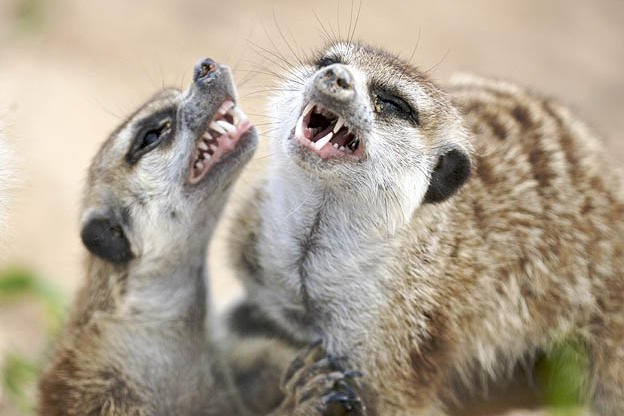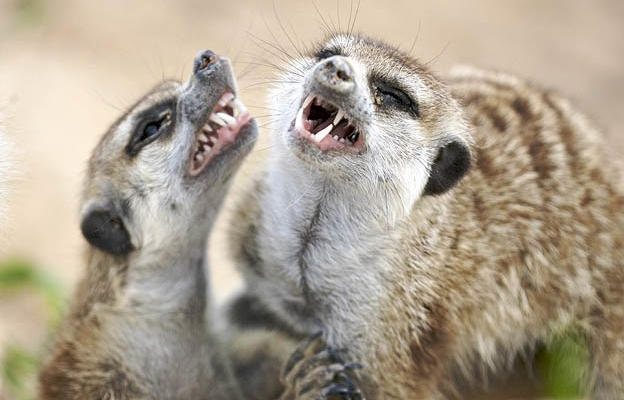
Meerkats are social animals, often found in groups called mobs or gangs, roaming the arid deserts of southern Africa. While they’re often seen as cute and friendly, it’s essential to remember that they are still part of the wild kingdom. This means they have instincts and behaviors that can sometimes lead to dangerous situations. So, what should you know about them when it comes to their potential threat to humans? Let’s explore.
Understanding Meerkat Behavior
Meerkats are incredibly social creatures, which is part of what makes them so fascinating. Living in large family groups, they work together to forage for food, raise young, and keep watch for predators. This dynamic creates a very tight-knit community, but it also means that their social structure can lead to aggression, especially when they feel threatened.
When you observe these animals, you might notice that they have a keen awareness of their surroundings. They often stand upright on their hind legs to survey for danger. When threatened, their instinct is to defend their territory. This can lead to aggression, especially if they feel cornered or provoked. So, while meerkats are not actively looking to harm humans, their natural instincts can lead to dangerous encounters if they perceive someone as a threat.
Signs of Aggression
It’s crucial to recognize the signs of aggression in meerkats. Unlike the cuddly creatures people often see in documentaries, a meerkat exhibiting aggressive behavior will display specific characteristics, such as:
- A raised tail and bristled fur.
- Vocalizations, like loud barks or growls.
- Displaying their teeth, which is a sign of warning.
If you encounter a meerkat displaying these signs, it’s best to give them space. Just like you wouldn’t want to approach a barking dog, it’s wise to respect a meerkat’s warning signs.
Are Meerkats a Threat to Humans?
Now, you might be wondering whether meerkats are a genuine threat to humans. The short answer is: they usually aren’t a direct threat. Most interactions between humans and meerkats are benign, especially if the animals feel unthreatened. However, there are exceptions to this rule.
In areas where humans encroach on meerkat habitats—like farms or settlements—these animals may become more defensive of their territory. There’s a difference between random encounters in the wild and situations where meerkats feel endangered. In these latter cases, they might engage in aggressive behaviors to protect themselves or their group.
Wild vs. Tame Meerkats
It’s essential to differentiate between wild meerkats and those in captivity or domesticated settings. Wild meerkats are unpredictable, largely due to their instinctual behavior. On the other hand, if meerkats are raised in captivity and interact with humans from a young age, they may display less aggression. However, even more tame meerkats can act defensively if they feel threatened.
In other words, approach a wild meerkat with caution—always keep your distance. They might look cute and inviting, but don’t forget that they are still wild animals with natural defenses.
Protecting Yourself from Potential Danger
If you find yourself in a situation where meerkats are nearby, it’s crucial to take some precautions. Here are a few tips to keep in mind:
- Stay Calm: If you see a meerkat, try to remain calm. Panic can provoke more aggressive behavior.
- Keep Your Distance: Respect their space. Observing from afar is always best.
- Don’t Feed Them: Feeding wild meerkats leads to dependence on humans and can encourage aggressive behavior when they don’t receive food.
By taking these preventive steps, you’re safeguarding yourself and allowing the meerkats to enjoy their space without undue stress.
The Role of Meerkats in the Ecosystem
While it might be easy to focus solely on the potential dangers meerkats pose, they play a crucial role in their ecosystem. These social animals are often seen as indicators of a healthy environment. They help control insect populations by feeding on various pests, and their foraging activities aid in seed dispersal for many plants.
By understanding the ecological importance of meerkats, we can appreciate them for their role in the environment rather than viewing them solely through the lens of potential danger. They truly contribute to a delicate balance within their habitat.
Conservation and Respect
The best approach to any wildlife, including meerkats, is conservation and respect. Learning about their habitats and behaviors equips us to interact appropriately with them. When we respect their space and understand their significance in nature, we can enjoy observing them without putting ourselves or the animals at risk.
Here’s the thing: protecting meerkats means protecting our planet. By fostering a sense of responsibility towards wildlife, we can work towards conserving their habitats and ensuring that future generations can enjoy their existence.
Final Thoughts on Meerkat Interactions
So, can meerkats be dangerous to humans? While they aren’t typically a threat, it’s essential to approach these fascinating creatures with caution and respect. By understanding their behavior and social dynamics, you can appreciate meerkats for the unique animals they are while keeping yourself safe.
Whether you encounter them in the wild or learn about them through articles and documentaries, remember: they are wild animals with instincts that guide their actions. With the right mindset and respect for their space, you can enjoy the beauty of meerkats without crossing into danger.

